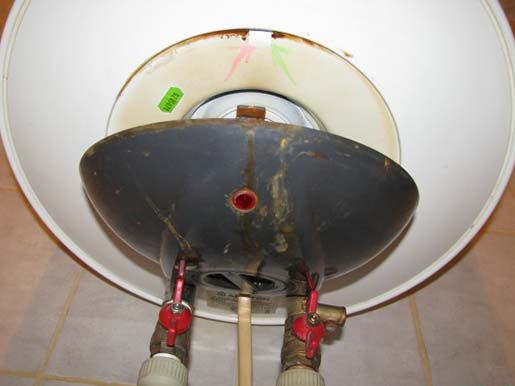What is the difference between a boiler and a water heater?
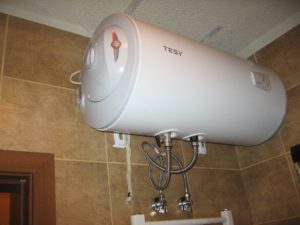 A boiler is a device with a container inside in which water is constantly located and maintained at a set temperature. No there is a thermostat and a magnesium anode. For heating, a thermal electric heater (TEH) is used.
A boiler is a device with a container inside in which water is constantly located and maintained at a set temperature. No there is a thermostat and a magnesium anode. For heating, a thermal electric heater (TEH) is used.
The thermostat is necessary to control the temperature set by the user. It turns the heating element on and off, bringing the temperature level to the desired value. As soon as the tap opens, hot water leaves the top of the device, due to the fact that cold water coming from below pushes it out.
To reduce heat losses, there is a heat-insulating material between the device body and the container, which operates on the principle of a thermos.
The magnesium anode performs an anti-corrosion function, protecting the inner surface of the tank.
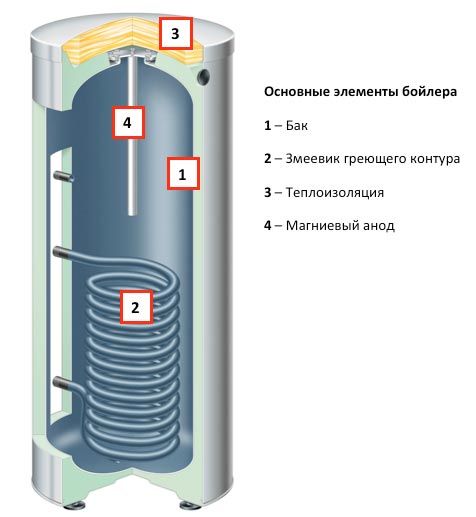
The content of the article
Differences between a boiler and a water heater
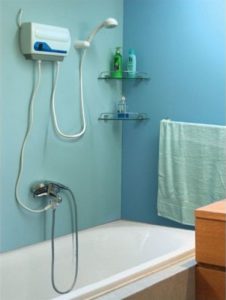 Instantaneous water heaters are fundamentally different in that water does not accumulate in them, but is heated by passing through a heating element (heating element, heating coil or gas burner). In this way, you can heat an unlimited amount of water, because in this case a container is not used. The water heater turns on automatically when the tap is opened.
Instantaneous water heaters are fundamentally different in that water does not accumulate in them, but is heated by passing through a heating element (heating element, heating coil or gas burner). In this way, you can heat an unlimited amount of water, because in this case a container is not used. The water heater turns on automatically when the tap is opened.
One of the advantages of an instantaneous water heater is its small size and weight.It can be easily placed, for example, above a sink, while installing a boiler will require much more space, and the weight of the filled device is considerable, which means that you will need to approach the issue of its installation more carefully.
Another advantage of a water heater is more economical energy consumption. In the case of an instantaneous water heater, electricity is spent only on heating water during its use, i.e. only when the tap is open. The boiler consumes electricity not only for heating, but also for maintaining the desired temperature.
But after opening the tap, water flows out at the temperature we need. In the case of an instantaneous water heater, when you open a hot water tap, what is in the system, i.e., cold water, will first drain out. Due to this, its consumption increases.
ATTENTION! Some instantaneous water heaters require the installation of special mixers, while when using boilers, the usual ones already available in the room are suitable.
Types of boilers and their features
There are direct or indirect heating devices.
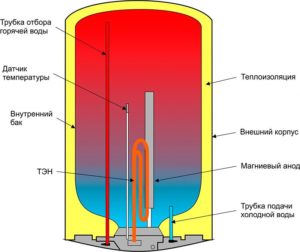 Direct heating boilers They are devices with a water tank; the heating element is located either directly in the tank itself or under it. They use heating elements or gas burners. Devices of this type are widely used in apartment buildings during hot water supply shutdowns in the summer.
Direct heating boilers They are devices with a water tank; the heating element is located either directly in the tank itself or under it. They use heating elements or gas burners. Devices of this type are widely used in apartment buildings during hot water supply shutdowns in the summer.
Electric ones, in turn, come with the use of a dry heating element (the heating element itself does not come into contact with water, it is located in a special flask) or wet (immersed heating element). Devices with a dry heating element are more expensive, but they work 3–4 times longer.
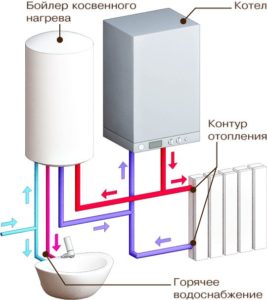 Indirect heating boilers heat water through the use of a heat exchanger. Water is supplied from the heating boiler through a pipeline. A coil is most often used as a heat exchanger; the more turns it has, the faster the heating occurs. Devices of this type have found application in private homes and premises that do not have central heating.
Indirect heating boilers heat water through the use of a heat exchanger. Water is supplied from the heating boiler through a pipeline. A coil is most often used as a heat exchanger; the more turns it has, the faster the heating occurs. Devices of this type have found application in private homes and premises that do not have central heating.




